
The Search for Captain Morgan's Lost Fleet
Captain Morgan Dive
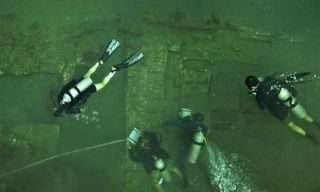
A team of archaeologists study the wreckage of a ship they believe to be part of Captain Henry Morgan's lost fleet. The dive team discovered approximately 52 by 22 feet of the starboard side of a 17th century wooden ship hull and a series of unopened cargo boxes and chests encrusted in coral.
Castillo De San Lorenzo
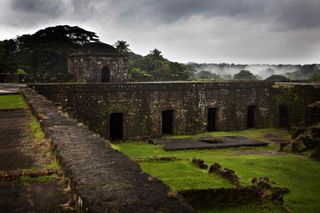
In 1671, in an effort to capture Panama City and loosen the stronghold of Spain in the Caribbean, Captain Henry Morgan set out to take the Castillo de San Lorenzo (above), a Spanish fort on the cliff overlooking the entrance to the Chagres River, the only water passageway between the Caribbean and the capital city. Although his men ultimately prevailed, Morgan lost five ships to the rough seas and shallow reef surrounding the fort.
Captain Morgan Dive Crew
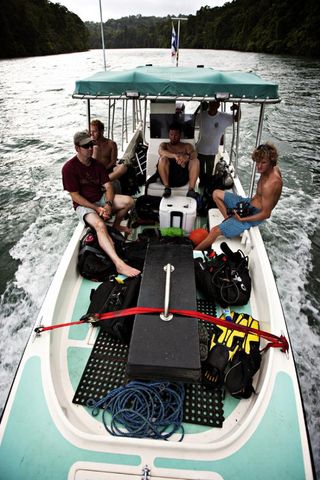
Members of the underwater research team, comprised of leading archaeologists and divers from Texas State University and volunteers from the National Park Service's Submerged Resources Center and NOAA/UNC-Wilmington's Aquarius Reef Base, boat down the Chagres River in Panama to the site of the shipwreck.
Captain Morgan Dive
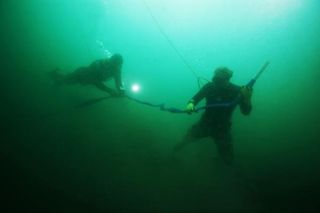
Team leader Fritz Hanselmann and dive expert Jason Nunn prepare to unearth a larger section of a recently discovered shipwreck using a high-pressure air jet. Hasselmann is leading a team of marine archeologists and divers in search of the lost ships of Henry Morgan.
Captain Morgan Dive
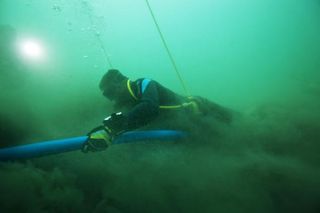
A team of marine archeologists and divers in search of the lost ships of Henry Morgan. Dive expert Jason Nunn uses a high-pressure air jet to clear sand and debris from a recently discovered shipwreck off the mouth of the Chagres River.
Captain Morgan Dive
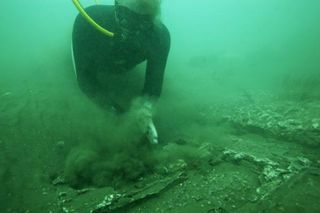
Team leader Fritz Hanselman "hand-fanning" sand away from the remains of a recently discovered shipwreck. Hand-fanning is a common practice in marine archaeology.
Captain Morgan Map

The results of underwater mapping, written out on waterproof slates, of a shipwreck recently discovered by a team of marine archeologists and divers in search of the lost ships of Henry Morgan.
Sign up for the Live Science daily newsletter now
Get the world’s most fascinating discoveries delivered straight to your inbox.












